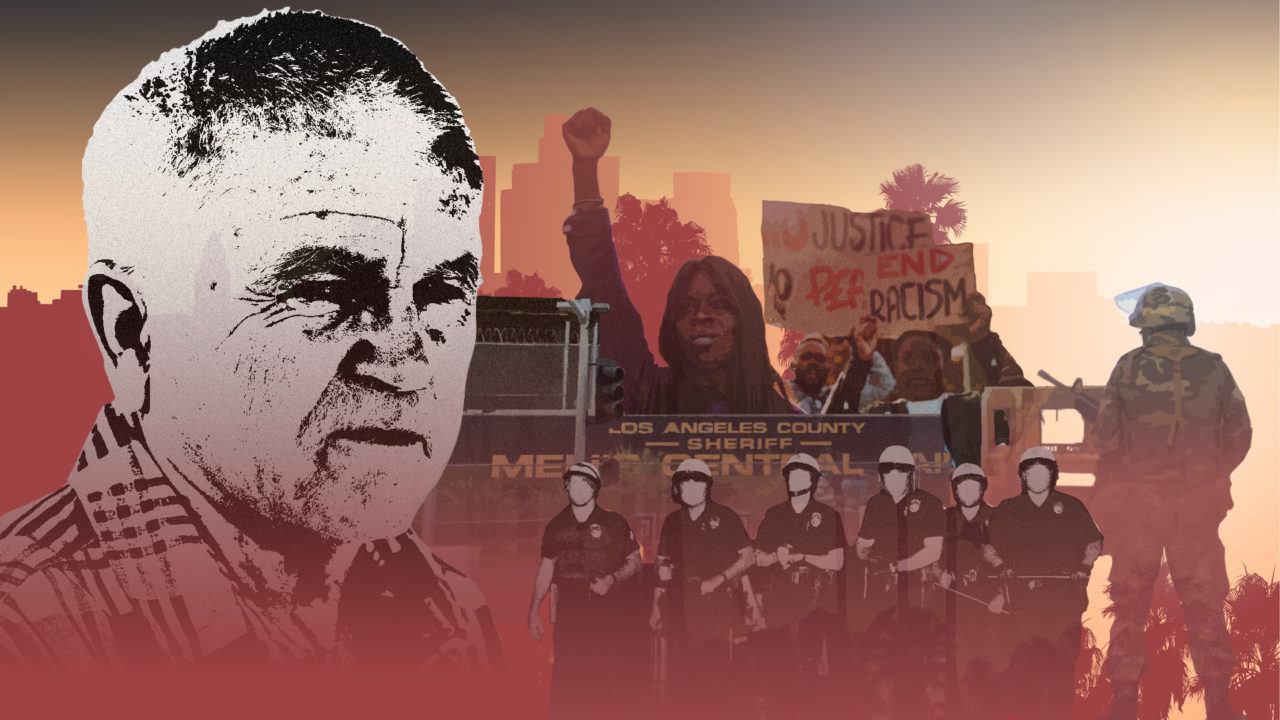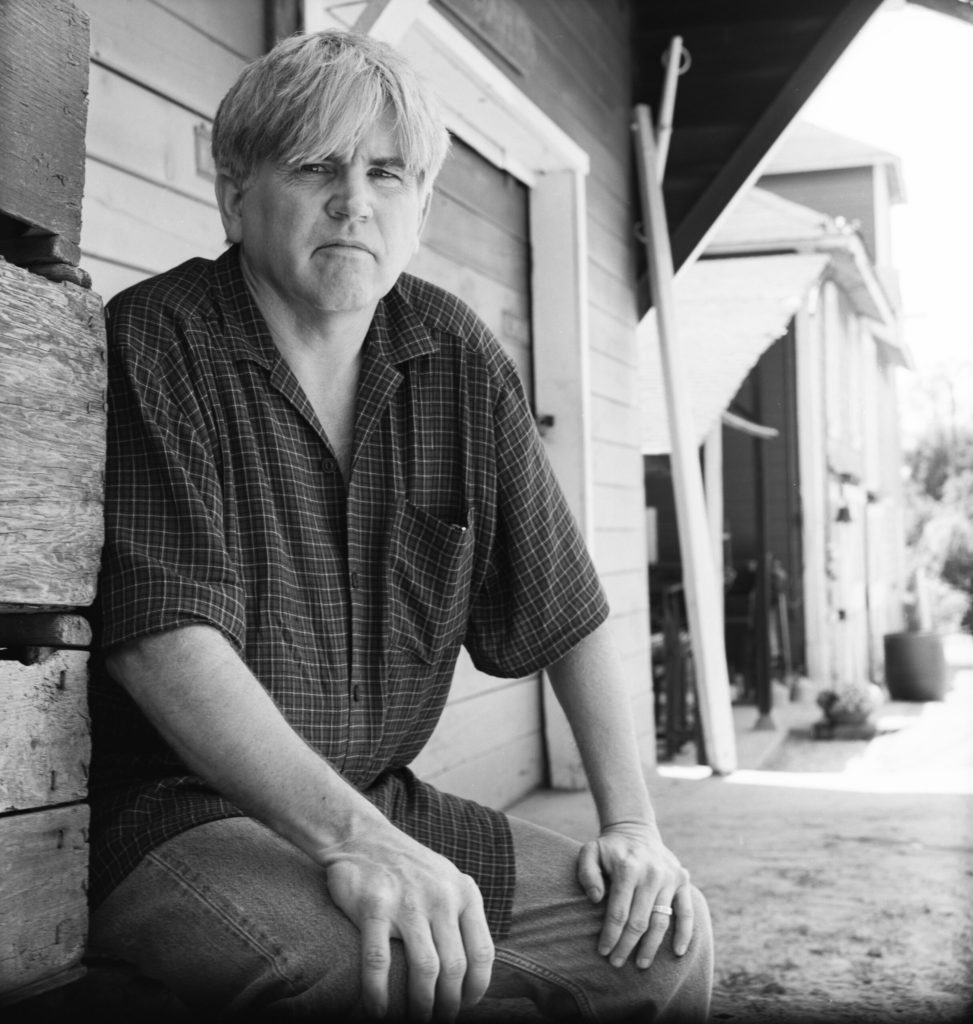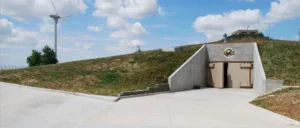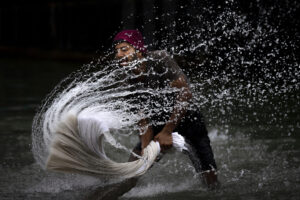Mike Davis Mined L.A.’s Soul
In praise of writer Mike Davis: prophet, burr, spellbinder and friend. Illustrations by Marco Amador. Sources: Getty Images / Archinect / ADSAUSAGE.
Illustrations by Marco Amador. Sources: Getty Images / Archinect / ADSAUSAGE.
Publisher’s Note: Mike Davis was an often-prescient author and an unflinching defender of human rights. We at Truthdig were honored that he was a friend, and we thoroughly enjoyed working with his daughter Róisín when she was part of Truthdig’s staff. Mike will be greatly missed by all he touched.
You can read more of Mike’s work on Truthdig here:
Not a Revolution—Yet
We should resist the temptation to over-interpret Trump’s election as an American Eighteenth Brumaire or 1933. Progressives who think they’ve woken up in another country should calm down, take a stiff draught, and reflect on the actual election results from the swing states….
Searching for ‘Famous Men’ in Alabama: Mike Davis on His Favorite Banned Book
When I first witnessed a blood-red Alabama sunset — an astonishing sight for a Southern Californian used to Ed Ruscha-like pastel skies — I thought of the Gudger and Ricketts families, their backs bent under the heavy bags of cotton, looking at this biblical ending to their long day of toil. The urge to re-read Agee was overwhelming….
A transparency is a positive photographic image imprinted on plastic or glass, through which light is projected onto a wall or screen, dramatically enlarging its viewing surface.
I’ll show a few slides that depict moments with author Mike Davis, the most consequential writer and thinker on Los Angeles since… perhaps ever. But his work roams far beyond Los Angeles, including popular and scholarly work on environmentalism, Marxist theory, urbanism and public health. He is also conversant in “hard” sciences like geology, and can read specialized literature in fire science and climatology. Over the years he’s blurred the lines between these disparate fields. He braids them together with an indefatigable faith in a revolutionary project: nothing less than the liberation of humanity from human exploitation, which today also requires the end of humanity’s malevolent exploitation of the natural world.
His faith in revolution is historically situated, pointing toward a string of moments in which “utopian” visions have flourished in the here and now, before crumbling under the weight of counterrevolutionary forces and internal contradictions, only to be taken up again. There have been large-scale experiments such as the Paris Commune or the Spanish Republic, and countless small-scale ones, like Christian Base Communities in 1980s rural Central America. Mike tells us that the future must be “excavated in the past,” rescued from under the ruins of reaction. The slides throw light on scenes from across the more than 30 years I’ve known Mike.
The occasion for this appreciation is the recent announcement by his wife, the artist and curator Alessandra Moctezuma and later by Mike himself in interviews, that he has suspended treatment for cancer and is in palliative care. He said that he will avail himself of California’s End of Life Option Act and is spending his days at home “surrounded by love and incredibly pampered.”

His work on Los Angeles is certainly his most popular, but caught in a reductionist binary between optimism and pessimism that tracks with the city’s own cultivated theme of “sunshine and noir” (to use Mike’s own construction from City of Quartz). But his LA. oeuvre — bookended by 1990’s City of Quartz and last year’s Set the Night on Fire: L.A. in the Sixties, with 20 nonfiction titles overall — is a holistic, dialectical study. The booster image of L.A. as a WASP-y “white spot,” racially pure and bathed in a Mediterranean glow, was bolstered, paradoxically, by its experience of the apocalyptic disasters both natural and manmade — seismically, climatologically, on its turbulent streets and representationally in its literature, cinema and visual art. (“The Literary Destruction of Los Angeles,” a chapter in 1998’s Ecology of Fear, is a magisterial treatise on the city’s obsession with its own demise.) The geography is all the more paradisiacal for being on intimate terms with hell.
The Long Beach, Sylmar and Northridge earthquakes, the deadly floods of the early 20th century and the monstrous wildfires of the early 21st have taken hundreds of lives and are among the costliest disasters in U.S. history. The social geography produces its own disasters, an unending chain of violent encounters between communities of resistance (Black, Mexican, Asian, working poor, queer) and the infamous enforcer of the status quo, the Los Angeles Police Department, which, no matter how many blue-ribbon commissions and reform efforts are thrown at it, can be counted upon to reenact its role as reactionary goon squad.
From free speech riots in the old Plaza of the early 20th century to the wartime Zoot Suit Riots, from the Watts and Rodney King rebellions to dozens of smaller clashes (like the May Day rallies of 2007 in MacArthur Park, when LAPD motorcycle cops rammed activists, or the police riot against Vietnam War protesters when LBJ gave a speech in Century City in 1967), the streets of L.A. have long presented a bloody, but also inspiring, tableau. Critics of Davisian apocalypse betray their own obsession with the dark side and inability to read dialectically: There would be no repression without tremendous resistance.
At the core of Mike’s work is how he values the dignity of life itself — lived as equitable, healthy, sustainable. And not just human life. He identifies class struggle as the primary engine of modern human history, and he is also an environmentalist because capitalist exploitation violates not only the bodies of workers but the Earth itself. If Mike’s is still a human-centered ethics, he was, in the late 1990s, when he undertook his ecological turn with the publication of Ecology of Fear, among the lonely voices to bridge the then-enormous gap between environmental consciousness and social justice. It wasn’t until well into the new millennium that the gap narrowed significantly, as evidence built up that climate change was approaching a critical threshold and that within its crosshairs were not just a million species, but the world’s vast and multiplying legions of the poor, concentrated in megacities in both hemispheres. Hurricane Katrina, which Mike prognosticated (just as he forewarned of the 1992 L.A. uprising, and of the pandemic we’re still in the midst of), was an early sign of what the new climate regime is beginning to unleash — a series of disasters that will lead to death and abandonment for the poor, even as it opens up hideous new gentrification opportunities for the rich.
His radical integration of the social and natural sciences, fording the unnatural barriers between them, approaches a Borgesian, Aleph-like apprehension of time and space. In this vision, the momentary flash of a rebellion on the streets of L.A. finds its place alongside evolution, climate and geology.
It all builds to a resonance that is greater than the sum of its constituent parts: for me, at least, a spiritual resonance.
There, I said it. Here is the spiritual work of Mike Davis.

(ca. 1988)
Mike holds court in the hallway outside the smoke-choked newsroom of the cramped, dingy L.A. Weekly offices in pre-gentrified, still-queer Silver Lake. He is wearing his trademark bowl haircut and an elfin grin, the kind that comes with the kicker to a funny-not funny story from the frontlines of the good fight. City of Quartz is still a couple of years away, but in his early 40s he already has the aura of radical legend about him.
We know you were born in Fontana, that you were in CORE and SDS, are smarter than everyone in the building, and that you were the one to help us read the chaotic moment. It is hard to convey the sense of crisis in the late Reagan years without seeming to overstate it, given what we face today. But we did face nukes, AIDS, homophobia blaring from the White House, murderous American policy in Central America, a homelessness crisis as critical as today’s and a liberal order in City Hall that barely offered a fig leaf to a savage LAPD.
We thought: If Mike’s returned to L.A. after stints in London, Belfast and other radical hot spots, just maybe we’d have a ringside seat to our own revolution.
* * *
A couple of years later, we worked on a major project together about the role of the Catholic Church in the city. You laid out the dark history — the reactionary reign of Cardinal James Francis McIntyre through the rebellious 1960s. But you haven’t depicted Christianity only as a formidable part of the Establishment. Set the Night on Fire, you and co-author Jon Wiener’s sprawling account of radical activism in 1960s L.A., includes a chapter on Sister Corita Kent of the Sisters of the Immaculate Heart of Mary, who gained fame as a silk-screen artist. Her serigraphs, rendered in pop art style, playfully conveyed messages against the Vietnam War and for civil rights, and they unmistakably embodied the spirit of the recently concluded Second Vatican Council convened by Pope John XXIII: a Gospel grounded in the struggles of ordinary people, especially those caught in the crucible of social injustice. In Set the Night on Fire, a Catholic nun (who was ultimately pressured to renounce vows by McIntyre) takes her place in the pantheon of revolutionary heroes alongside Communist Party leader Dorothy Healey, Los Angeles Free Press editor Art Kunkin and the student leaders of the Chicano Blowouts.
Most of my leftist friends made the sign of the cross at anything that smacked of religion — especially Christianity. But there you were, self-proclaimed Marxist, writing an essay in Grand Street with great verve about the Azusa Street Revival in early 1900s L.A., where the spirit descended in “tongues of fire” on a multiracial crew of social outcasts — the founding moment of Pentecostalism, arguably the most important religious movement of the 20th century (which, of course, has taken a long, rightward turn since Azusa Street’s liberatory populism).
You were raised by an Irish Catholic mom who voted Republican out of a kind of class consciousness (hating the Kennedys as “lace curtain” Catholics). Your father was a fierce trade unionist with progressive views on race. Somewhere along the line you received ideas from Jewish apocalypticists, the Old Testament-era prophets who were the forerunners of Jesus and his followers — the social justice warriors of their day. You made the connection explicitly in an interview:
“I have had a lifelong fascination with the deep roots of religion in the spiritual and imaginative labor of the poor. The apocalypse … is the revelation of the secret history of the world, of the mysterious pathways of evil. It establishes the narrative of the slave, the defeated Native American and the poor immigrant as the truth of history.”
You write in the voice of the prophets.

(1990)
Mike leads a British documentary film crew on a tour of L.A. streets that prove City of Quartz’s thesis — the carceral brutalism of the Men’s Central Jail, the seething avenues of South Central. Next stop: Tommy’s Hamburgers, the “original, world famous” stand in the Rampart District. The scene, in the shadow of Downtown’s glass and steel power structures, is boisterous, proletarian local color: a big, brown, neon-haloed after-hours crowd spilling off the sidewalk into the street. Kid Frost raps from mega-speakers on a car stereo. A lowrider bounces for good measure.
Mike beams.
I can hear his voice so clearly:
“Guys, this is just amazing. So now you can see who really owns the streets of L.A. — and it’s not the LAPD.”
* * *




It is hard to overstate City of Quartz’s immediate consequence, how it helped consolidate the so-called Los Angeles School, fed by intellectual energy from scholars in urbanism and geography. The book’s influence spilled past the ivory tower, exciting L.A.’s left and scandalizing the boosters, who mounted a decade-long assault led by, among others, the same Los Angeles Times that has published no fewer than three homages to Mike since the announcement that he’s suspended cancer treatment.
His focus on the machinations of the city’s white power structure in City of Quartz might have inadvertently erased women and people of color, as fellow historian Dolores Hayden pointed out in her extraordinary and still fresh The Power of Place. But Mike’s work was only partly on the page. When journalists or luminaries seek him out (and they have, in a steady stream, for decades), he often takes them on exhaustive tours of the geographies he’s rendered in his written work, connecting them with community actors so they can speak for themselves. Mike passed the mic along wherever he could.
* * *
Sometime in late 1990 or early 1991, Mike approached Lynell George and me — the only Black and brown news writers at the Weekly then — with the offer of book contracts. Mike was editing a new series for Verso, the venerable Marxist press in London, where he helped edit the New Left Review in the ’70s. He baptized the series “Haymarket,” after the legendary confrontation between labor and police in 19th century Chicago. The manuscripts we turned in — reportage from Los Angeles on the eve of the 1992 uprising — appeared just as the city erupted in flames. The attention we received set our professional paths for life.
I spoke with Lynell about this the other day, and realized something I had never really dwelled upon: Mike never once made an attempt to “edit” us, filter us, nudge us in any particular direction, ideologically or otherwise. He gave us a platform to say whatever the hell we wanted, to be ourselves. And that, from a white dude back then! (In the early, awkward, “multicultural” days.) This was a radical embodiment of his politics.

(2019)
His house is in Golden Hill, the San Diego district on a dome of land crowned by Balboa Park’s extravagant “Spanish” architecture — what Carey McWilliams, Southern California activist-historian and Mike’s most important antecedent, called the region’s “fantasy heritage” (San Diego as Seville). Fronting the street is Mike’s two-story studio, with its hypermodern design by Teddy Cruz, the hyperimaginative architect of the U.S.-Mexico borderlands. Behind the studio is the family’s residence, an older, modest structure with more relaxed California touches.
On the afternoon between Christmas and New Year’s that my daughters, girlfriend and I visit with him and Alessandra, COVID is only weeks away (and Mike, epidemiological expert on novel viruses, surely knows what is about to be unleashed upon us). But we don’t speak of illness that day. Mike has risen from his latest bout with lymphoma, esophageal cancer and basal carcinoma and wears a couple of small bandages on his face.

He is padding around the house barefoot. I have told my daughters that I don’t believe in geniuses — exceptional American individualistic horseshit — but that Mike is a genius. They listen in reverent silence as he holds forth, mostly on Western Americana and the borderlands, a passion that we share. Episodes like the Colorado Coalfield War, the Rock Springs Massacre, the Cananéa Strike in Sonora (an important foreshock of the Mexican Revolution). He has a particular interest in the anarchist history of the early 20th century borderlands, including the little-told chapter of the Magonistas in Los Angeles — Mexican exiles agitating at the radical edge of the Revolution.
More than once, he ducks out of the room and retrieves something from the studio — a magazine, a copy of C.R. Whittaker’s Frontiers of the Roman Empire and then, a rock, which he places before me on the Mexican oil cloth-covered dinner table.
Not just any rock.
In the photograph on my phone, it is the size of an eggplant, mottled gray, scored on top like a loaf of artisanal bread.
This, says Mike, is what multinational mining interests prize above all else today.
Rare earth minerals.
The specimen is from the Mountain Pass Rare Earth Mine on the edge of the Mojave National Preserve. That’s not all they’re looking for out there. “There are dozens of claims for lithium,” he says, the lithium demanded by Tesla car batteries, by the iPhone you’re reading this story on, by the endless gadgetry of our virtual lives. Water will be pumped from ancient aquifers for lithium extraction – which is among the most hydrointensive of mining practices.
“They are going to make a desert out of the desert,” says Mike. Which is another way for him to say how much he loves the Mojave.
* * *
Mike doesn’t place the rock on the dinner table because it tells a dark tale. (Of course it does.) He is telling us the desert is dying because it is still alive, in its complex, fragile way.
Because, as the classic Mexican ranchera says, the hills and valleys speak and even the stones shout. Because it is beautiful.
All matter is alive and singing and our gravest sin is silencing the song so we can four-wheel across the dunes, plow under Joshua trees for a new subdivision, and doomscroll on our phones.
We did not leave Mike’s house that day despairing.
We left it angry at those who extract value from death. And full of love for the people and the land enduring exploitation. Just like the prophets who warned of a god’s wrath against injustice in the desert so long ago.
Copyright Capital & Main.
Your support is crucial…With an uncertain future and a new administration casting doubt on press freedoms, the danger is clear: The truth is at risk.
Now is the time to give. Your tax-deductible support allows us to dig deeper, delivering fearless investigative reporting and analysis that exposes what’s really happening — without compromise.
Stand with our courageous journalists. Donate today to protect a free press, uphold democracy and unearth untold stories.






You need to be a supporter to comment.
There are currently no responses to this article.
Be the first to respond.